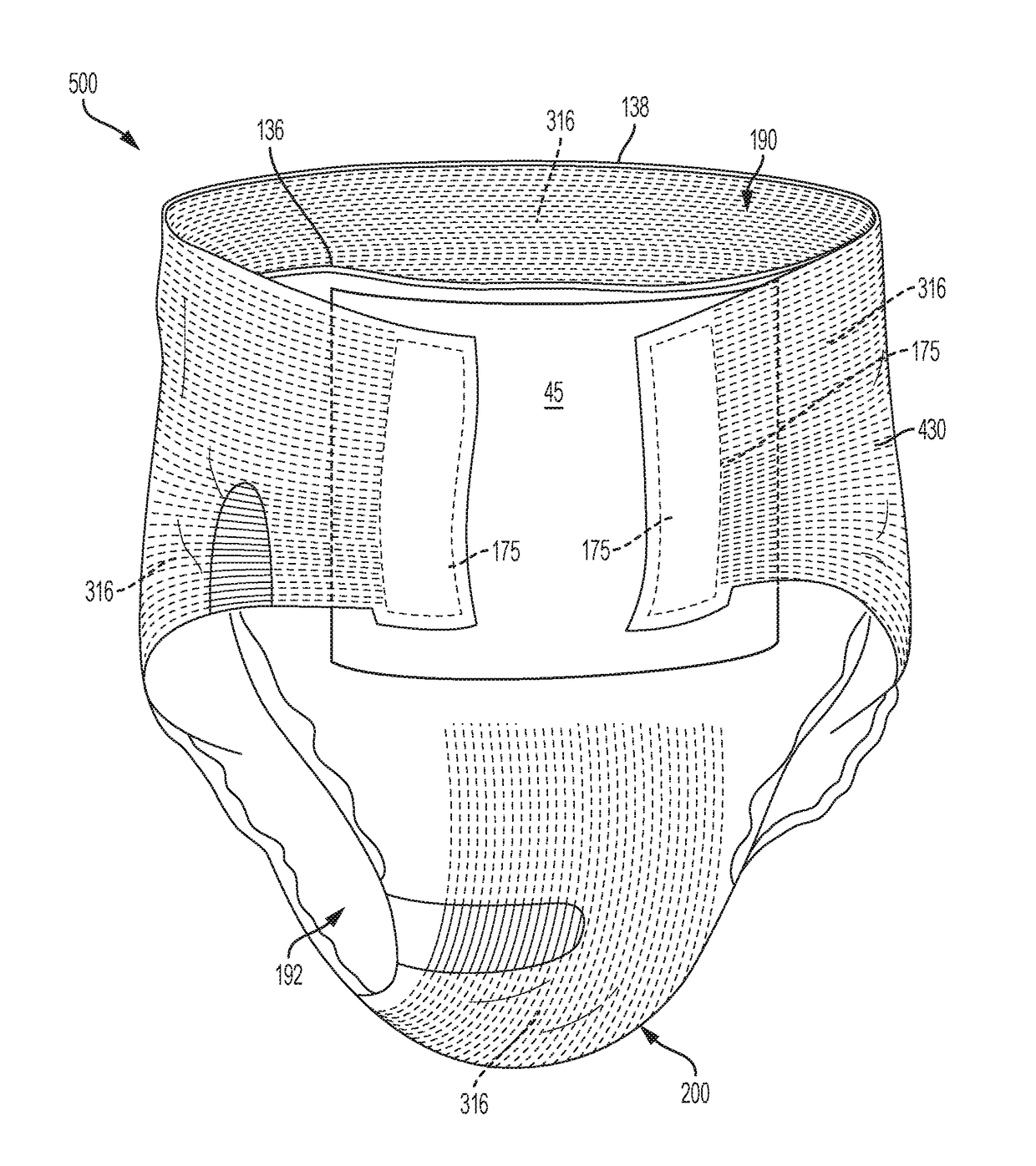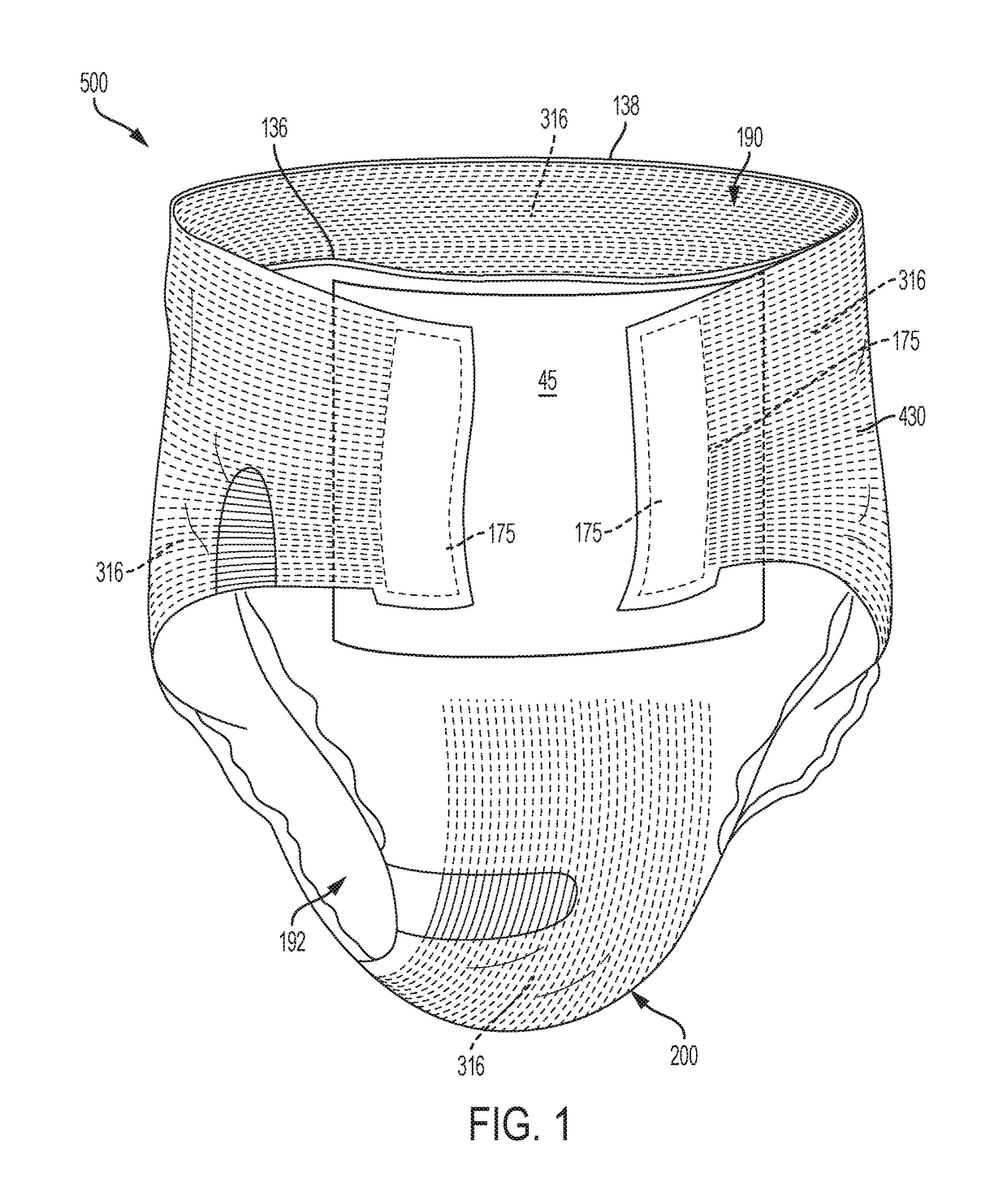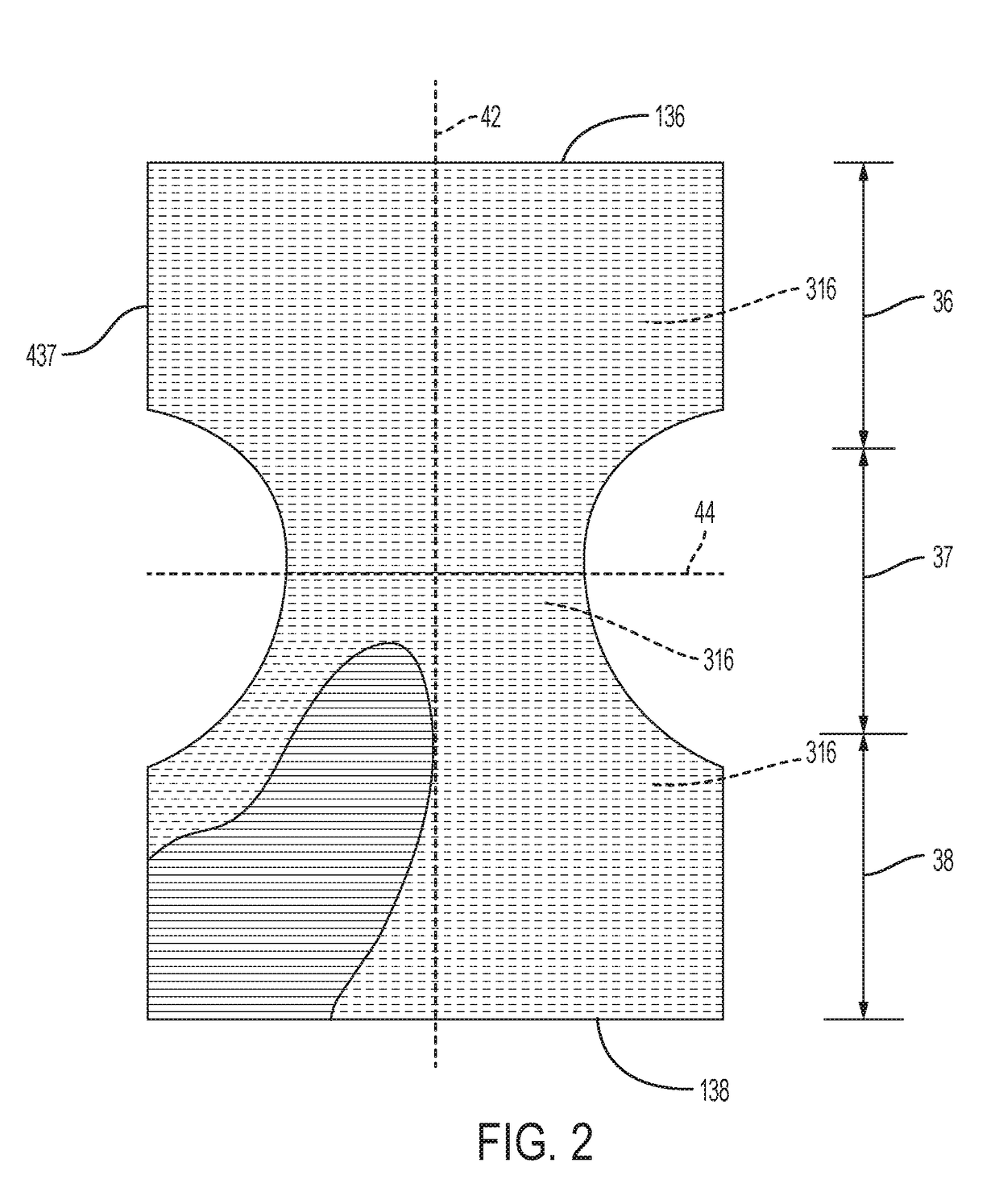Absorbent article(s) chassis comprising beamed elastics
a technology of absorbent articles and elastics, which is applied in the direction of bandages, melt spinning methods, other domestic articles, etc., can solve the problems of reducing comfort and non-garment-like appearance, reducing comfort and a non-garment-like appearance, and not maintaining the proper forces at the waist and legs to provide proper initial and sustained fi
- Summary
- Abstract
- Description
- Claims
- Application Information
AI Technical Summary
Benefits of technology
Problems solved by technology
Method used
Image
Examples
example 1
Belt Pant Article (See, for Example, FIGS. 5, 5A, 6, 7, 7A, and 8)
[0195]Example 1 is a belted pant absorbent article. The pant comprises a belt laminate disposed in both the waist regions and the following materials and construction.[0196]Outer Belt Layer (first substrate layer 306): 13 gsm spunbond nonwoven[0197]Inner Belt Layer (second substrate layer 308): 13 gsm spunbond nonwoven[0198]Backsheet Film 126: 12 gsm liquid impermeable polyethylene film[0199]Core Wrap: 10 gsm hydrophilic spunbond nonwoven[0200]AGM: absorbent gelling material[0201]Distribution Layer: crosslinked cellulosic fiber[0202]Acquisition Layer: 43 gsm synthetic acquisition layer[0203]Topsheet 124: 12 gsm hydrophilic spunbond nonwoven[0204]Belt Elastic Profile: Table 1, col B[0205]Cuff Elastic Profile: Table 4, col C
example 2
Taped Article (See, for Example, FIGS. 9, 9A, and 10)
[0206]Example 2 is a side panel taped absorbent article. The taped article comprises a pair of side panels disposed in a first waist region and the following materials and construction.[0207]Elastomeric Ear Panel Outer Layer (first substrate layer 306): 17 gsm carded nonwoven[0208]Elastomeric Ear Panel Inner Layer (second substrate layer 308): 17 gsm spunbond nonwoven[0209]Backsheet Film 126: 12 gsm liquid impermeable polyethylene film[0210]Core Wrap: 10 gsm hydrophilic spunbond nonwoven[0211]AGM: absorbent gelling material[0212]Distribution Layer: crosslinked cellulosic fiber[0213]Acquisition Layer: 43 gsm synthetic acquisition layer[0214]Topsheet 124: 12 gsm hydrophilic spunbond nonwoven[0215]Side Panel Elastic Profile: Table 2, col A[0216]Cuff Elastic Profile: Table 4, col B[0217]Front Waistband: Table 3, col A[0218]Back Waistband: Table 3, col A
example 3
Side Panel Pant Article (See, for Example, FIGS. 3 and 3B)
[0219]Example 3 is a side panel pant absorbent article. The pant article has a pair of side panels disposed in each waist region and comprises the following materials and construction.[0220]Side Panel Outer Layer (first substrate layer 306): 17 gsm carded nonwoven[0221]Side Panel Inner Layer (second substrate layer 308): 17 gsm spunbond nonwoven[0222]Backsheet Film 126: 12 gsm liquid impermeable polyethylene film[0223]Core Wrap: 10 gsm hydrophilic spunbond nonwoven[0224]AGM: absorbent gelling material[0225]Distribution Layer: crosslinked cellulosic fiber[0226]Acquisition Layer: 43 gsm synthetic acquisition layer[0227]Topsheet 124: 12 gsm hydrophilic spunbond nonwoven[0228]Front Side Panel Elastic Profile: Table 2, col B[0229]Back Side Panel Elastic Profile: Table 2, col B[0230]Cuff Elastic Profile: Table 4, col A[0231]Front Waistband: Table 3, col C[0232]Back Waistband: Table 3, col C
PUM
| Property | Measurement | Unit |
|---|---|---|
| Length | aaaaa | aaaaa |
| Length | aaaaa | aaaaa |
| Fraction | aaaaa | aaaaa |
Abstract
Description
Claims
Application Information
 Login to View More
Login to View More - R&D
- Intellectual Property
- Life Sciences
- Materials
- Tech Scout
- Unparalleled Data Quality
- Higher Quality Content
- 60% Fewer Hallucinations
Browse by: Latest US Patents, China's latest patents, Technical Efficacy Thesaurus, Application Domain, Technology Topic, Popular Technical Reports.
© 2025 PatSnap. All rights reserved.Legal|Privacy policy|Modern Slavery Act Transparency Statement|Sitemap|About US| Contact US: help@patsnap.com



